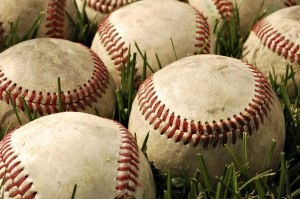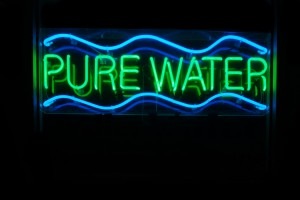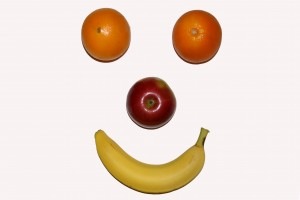I Scream, You Scream, We All Scream For Ice Cream
Sometimes there’s nothing better than a good old ice cream sundae.
As far as I’m concerned – and I’m far from an ice cream purist – my favorite thing is the stuff you can put on top of ice cream. The mixture of the topping and the ice cream – or frozen yogurt – is what makes it!
So Many Toppings
You can put just about anything on ice cream. I’m not suggesting broccoli or smoked salmon, but my guess is that some inventive person, somewhere in the world, has incorporated flavors or put flavors on top of ice cream that we normally wouldn’t even dream of.
Toppings Can Add A Mountain Of Calories
The standard fare: hot fudge, whipped cream, peanuts, walnuts in syrup, crushed heath bar, caramel sauce – can all add hundreds of calories to your sundae. For instance:
- Smucker’s Spoonable Hot Fudge Topping: 2tbsp, 39g, 140 calories, 4g fat, 24g carbs, 2g protein
- Smucker’s Spoonable Ice Cream Topping Pecans in Syrup Topping: 1tbsp, 36g, 170 calories, 10g fat, 20g carbs, 1g protein
- Regular Redi Whip: 2tbsp, 20 calories, 2g fat, 1g carbs
- Cool Whip, extra creamy: 2tbsp, 32 calories
- Regular m&m’s: 10 pieces, 20g, 103 calories, 5.2g fat, 12.1g carbs, 1.9g protein
- Peanut m&m’s: about 16 pieces, 38.8g, 200 calorie, 10.15g fat, 23.48g carbs, 3.72g protein
- Peanuts (1oz): 160 calories, 14g fat, 5g carbs, 7g protein
Some Stand-bys Are Lower In Calories
Some favorites are lower (not necessarily low) in calories, like:
- Rainbow Sprinkles (Mr. Sprinkles): Serving Size: 1 tsp (4g); Calories: 20, Total Fat: 0.5g, Carbs: 3g, Protein: 0g
- Chocolate Sprinkles (jimmies): Serving Size: 1 tbsp.; Calories: 35, Total Fat: 0g, Carbs: 6g, Protein: 0g
- Smucker’s Spoonable Ice Cream Topping Light Hot Fudge, Fat Free: 2 tablespoons (39g), 90 calories, 23g carbs, 2g protein
- 10 mini marshmallows: 22 calories, 0 fat, 5.7g carbs, .1g protein
- 18 gummi bears (40g): 140 calories, 0 fat, 43.5g carbs, 0 protein
Think Outside The Box For Lower Calorie Choices
The world is your oyster in terms of toppings. Why not fruit, cereal, or an already counted for you, crushed up 100 calorie pack of anything? Here are some other suggestions:
- Smucker’s Spoonable Pineapple Topping: 2 tbsp, 40g, 100 calories, 0g fat
- Regular Redi Whip: 2tbsp, 20 calories, 2g fat, 1g carbs
- Fat Free Redi Whip: 2 tbsp, 5g, 5 calories, 0g fat, 1g carbs
- Cool whip, light: 2tbsp, 16 calories
- Cool Whip, fat-free: 2tbsp, 15 calories, 43.5g carbs, 0 protein
- 1 mini box of raisins (.5 oz): 42 calories, 0.1g fat, 11.1g carbs, 0.4g protein
- One medium banana: 105 calories, 0 fat, 27g carbs, 1g protein
- One cup strawberry halves: 49 calories, o.5g fat, 11.7g carbs, 1g protein
- Sugar-free Jello puddings: 60 calories
- One cup of Froot Loops: 118 calories, o.6g fat, 26.7g carbs, 1.4g protein
- One cup of blueberries: 83 calories, 0.5g fat, 21g carbs, 1.1g protein
- Crushed pretzel sticks, 1 oz: 110 calories, 1g fat, 23g carbs, 3g protein
SocialDieter Tip:
Get creative with your toppings. You can have taste, nutrition, and caloric bargains if you think beyond the standard toppings (although sprinkles are a lot of bang for the caloric buck but low on the nutritional scale). The other important thing is to watch the portion size of the ice cream or frozen yogurt under the wonderful topping(s) – and try low fat, sugar free, fat free, slow churned ice creams and frozen yogurts and the many wonderful flavors of sorbet.




